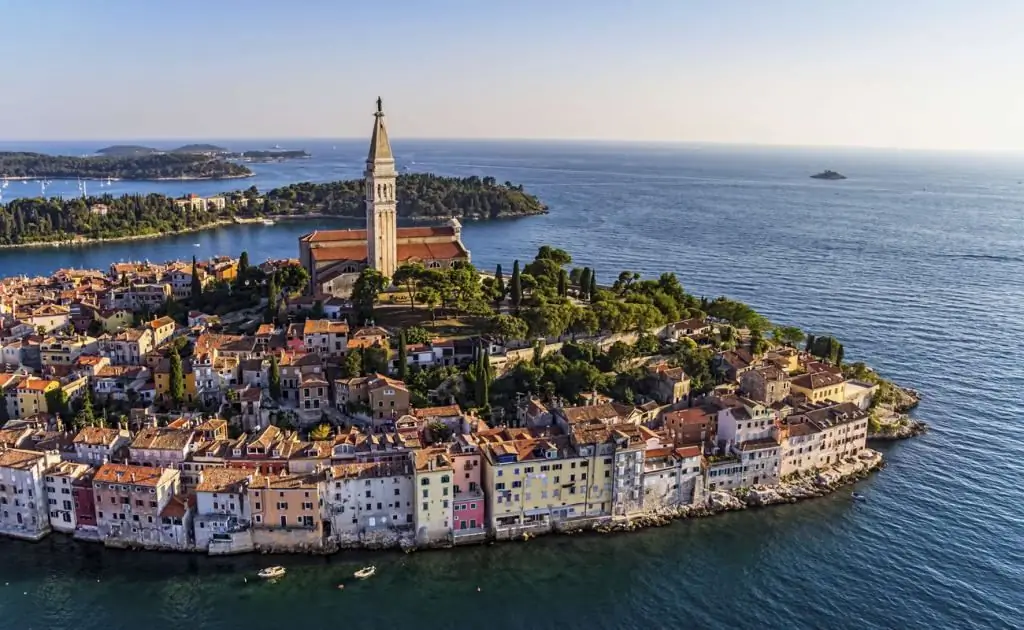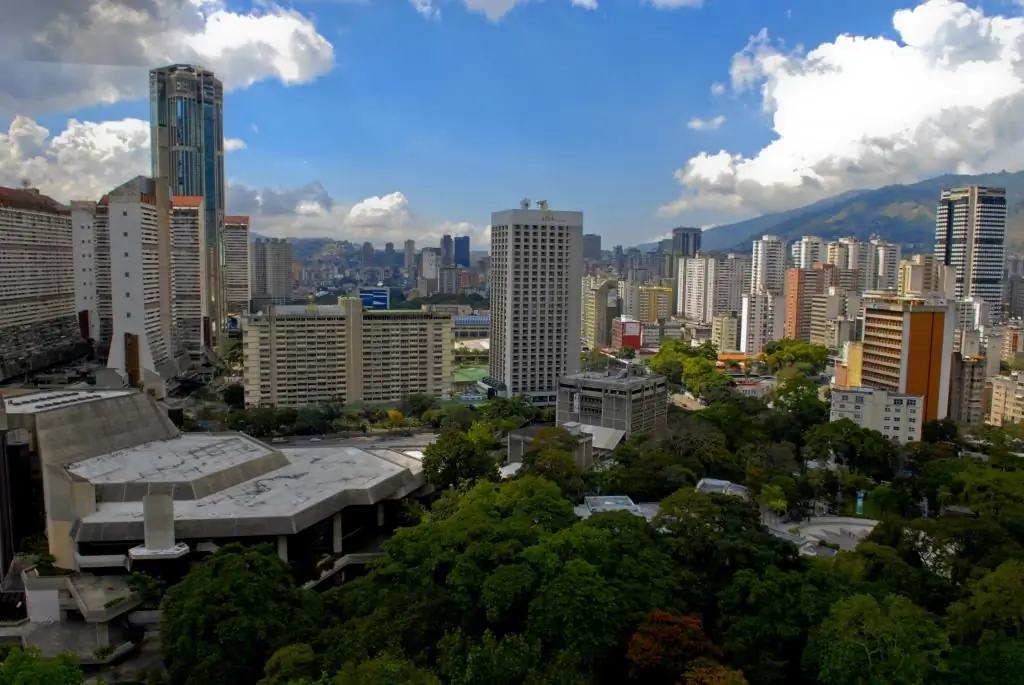- Author Harold Hamphrey [email protected].
- Public 2023-12-17 10:06.
- Last modified 2025-01-24 11:10.
Russia is a huge country, our vast motherland. It would be blasphemy in a lifetime to see only your city and its surrounding territories. Sometimes it is better to prefer traveling around your native country to vacationing in Turkey or Egypt. You can start with the chic city of the Nizhny Novgorod region - Vyksa. In this article, you will learn about all the interesting places in this city that you should definitely visit.
Iversky Monastery
The Vyksa Iberian Monastery was founded in 1863 by the Reverend Elder Hieromonk Barnabas. During his lifetime, he was greatly revered, and after his death, at the end of the 20th century, he was canonized as a saint. Barnabas prompted Nizhny Novgorod merchants to donate funds to open a convent, where he donated the Iberian Icon of the Mother of God, after which the monastery was named.
The place on which the monastery was built is called the "chosen heart". There is a legend in the city that at night people noticed burning candles and bell ringing there. In 1880-1894, the construction of the Cathedral of the Life-Giving Trinity inRussian-Byzantine style, the architect of which was Peter Vinogradov. The monastery complex also includes the main Iversky and Assumption Cathedrals, a bell tower, an almshouse and a large number of outbuildings.

One of the reasons for the construction of such a large monastery was that after the reform of 1864, unemployment increased and women's work was paid very low. Poor peasants came to the cities and barely found work. The only way out for many women, especially from the lower strata, was the monasteries.
The buildings of this landmark of Vyksa were erected for about fifty years. There were enough farms: horse and cattle yards, vegetable gardens, shops, a bee-keeper and a candle factory. In 1917, the monastery had about 100 nuns and 400 novices. Later, the monastery began to be destroyed. In 1919 it was completely closed. In 1924, the brick fence and the entire Iversky temple were dismantled in order to build an outpatient clinic and a city hospital. In 1927, the Trinity Cathedral and the bell tower were blown up. At the same time, the nuns did not want to leave their monastery, remaining in the cave cells, because of which, during the explosion, they were forever buried under the ruins.

Renewal of the monastery
On October 14, 1992, they began to revive the monastery, after the religious community of the Church of the Iberian Mother of God was again registered in the city. On February 25, 1993, the feast day of the Iberian Icon, the first liturgy was served in one of the former buildings of the monastery. The ruins began to be cleared and graduallyrestore them. On June 1, 2012, the bells were raised. In 2014, the bell tower was opened to visitors. From here you can enjoy great views of the city.
Museum of the history of the metallurgical plant
This landmark of Vyksa dates back to 1960. It is not only a museum of one factory, but also a local history museum of the whole city. It is also part of the Batashev-Shepelev estate complex and occupies two floors of his house. Unfortunately, the interiors of buildings where various Soviet organizations worked in the past no longer exist. But the halls have been renovated and now they look modern and very beautiful.

Exposure
The museum of the history of the Vyksa Metallurgical Plant presents various archaeological finds that help to plunge into the atmosphere of the past of the factories and the city itself. Here you can learn about all the former owners of the estate, see household items of the peasants who inhabited Vyksa, paintings from the collections of the owners of the estate, as well as contemporary works by city artists and other ancient artifacts. The historical section contains various photographs, documents and other objects.

In a separate room of this landmark of Vyksa there is an exposition dedicated to the Sukhovo-Kobylin family, who owned the estate after the Shepelevs. The next room is dedicated to Peter the Great, it is his huge portrait that adorns the building, in particular this room. There is a legend that the Batashev brothers honored the Emperor so much that they even orderedhis portrait at the famous Dutch artist.
Another hall was allocated for exhibits of artistic iron casting. His samples of weapons, figurines, frames for mirrors, reliefs and candlesticks are exhibited here. A separate room is also dedicated to various paintings from both the Batashev collection itself and contemporary masterpieces. Various temporary exhibitions have been held in a separate room since 2012.
Batashev hunting lodge
This place was used for recreation and entertainment by the Batashev family. Initially, it was built to improve the he alth of his son Ivan Batashev, who suffered from a mental illness. Later, the owners of the factories came here to relax and hunt.

Batashev-Shepelev Estate
This attraction of Vyksa is perhaps the main one in the city, its heart. It was the brothers Ivan and Andrey Batashev who, one might say, founded Vyksa. Catherine the Great gave them benefits for the construction of metallurgical plants here. When the granddaughter of Ivan Batashev played a wedding with General Shepelev, the estate received his name as well. Under these owners, the park and the estate flourished. But the time came when the factories fell into decay and completely went to the imperial treasury. People from the English Mining Company tried to revive the factories, but they succeeded only by the beginning of the 20th century under Anton Lessing.
The estate was only the center of the Batashevs' possessions. They built a wooden house, a huge park, menageries and greenhouses. There was a fortress theater and large ponds in the park.

ThisThe park is still the decoration of the city of Vyksa in the Nizhny Novgorod region. True, now there is neither a theater that burned down, nor greenhouses. During the Soviet Union, various attractions, a stadium and a cafe were installed here. The ponds remained intact and became objects of the Unified State Register of Cultural Heritage of the Russian Federation.
All buildings of the Batashev-Shepelev estate are painted yellow and white, the roofs are green. The house is the above-described museum of history. In front of the house there are bronze busts of the founders of the estate - Andrey and Ivan Batashev, Dmitry Shepelev and Anton Lessing.
There are many other attractions in the city, but these are worth visiting first. They allow you to fully plunge into the atmosphere of the history of Vyksa.






